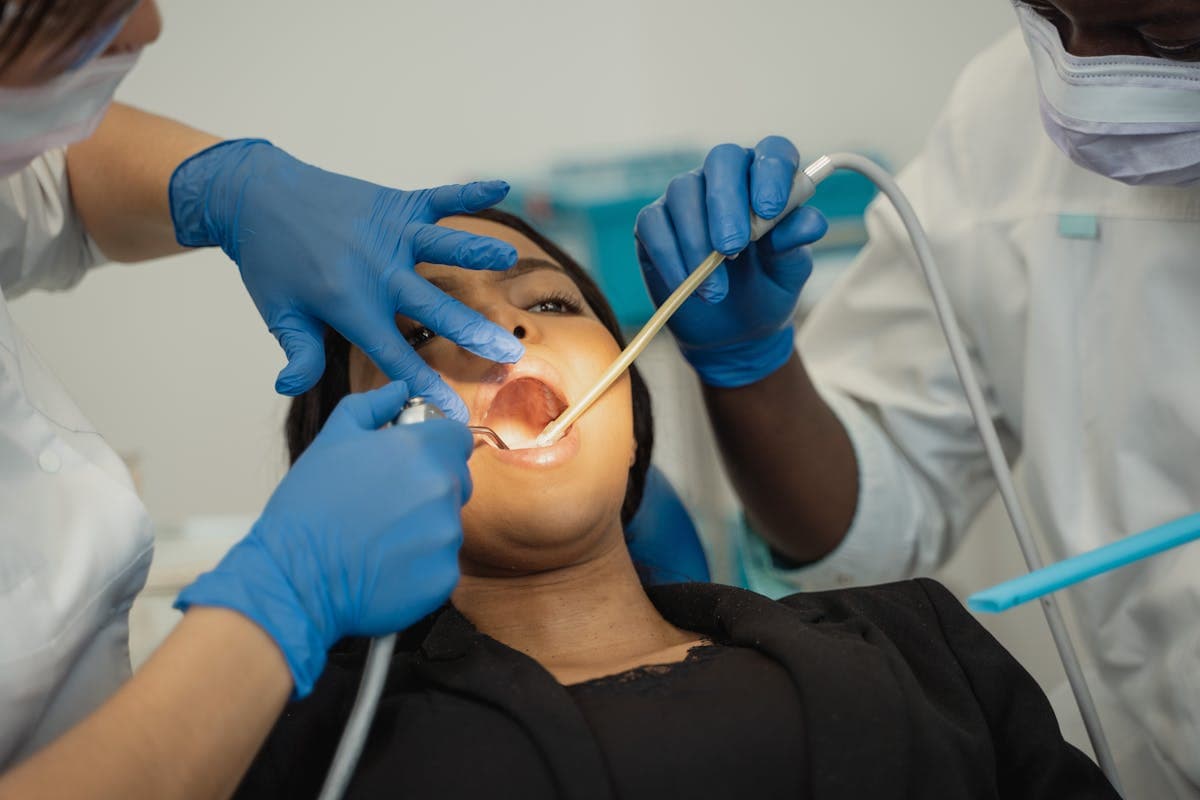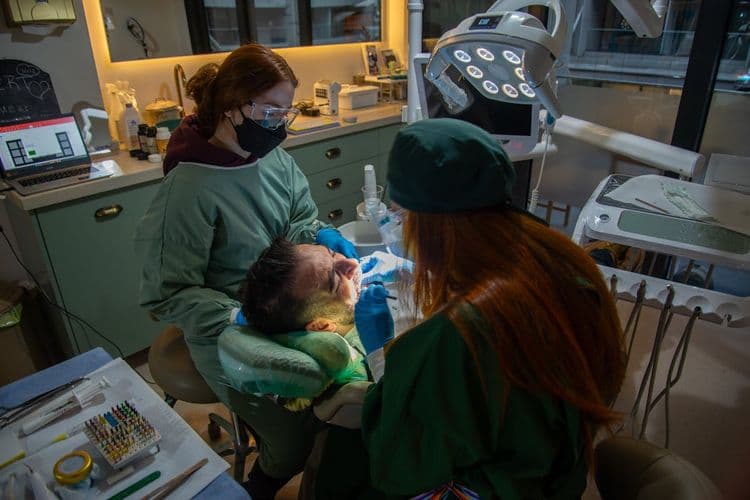Gingivitis and periodontitis represent two stages of periodontal disease, each with distinct characteristics and implications for oral health. Gingivitis is an early, reversible form of gum disease marked by inflammation and bleeding, primarily due to plaque accumulation. In contrast, periodontitis is an advanced stage involving significant bacterial infection and tissue destruction, potentially leading to tooth loss. Understanding the nuances between these conditions is essential for effective management and prevention, begging the question of how timely intervention can alter outcomes.
Understanding Gingivitis
Gingivitis, the most common form of gum inflammation, is often considered the preliminary stage of periodontal disease. Characterized by redness, swelling, and bleeding of the gums, gingivitis results primarily from plaque accumulation due to inadequate oral hygiene. Maintaining a rigorous oral hygiene regimen, including regular brushing, flossing, and use of antimicrobial mouth rinses, is vital in gingivitis prevention. Clinical studies indicate that effective removal of dental plaque is essential to prevent the progression from gingivitis to more severe periodontal conditions. Evidence supports the role of professional dental cleanings in conjunction with at-home care to reduce inflammation and bacterial load. Consequently, early recognition and diligent oral hygiene practices are pivotal in mitigating the risk of developing advanced periodontal disease.
Recognizing Periodontitis
Periodontitis is characterized by symptoms such as swollen gums, bleeding during brushing, persistent bad breath, and the formation of deep pockets between gums and teeth. Clinical management of periodontitis often involves scaling and root planing, antibiotic therapy, and in severe cases, surgical interventions to restore periodontal health. Early diagnosis and tailored treatment strategies are essential to prevent tooth loss and improve overall oral health outcomes.
Symptoms of Periodontitis
The early identification of periodontitis is essential for effective management and prevention of progression to more severe stages. Clinicians should be alert to symptoms indicative of periodontitis progression, particularly changes in gum tissue. Clinical signs include swollen, bleeding gums and persistent halitosis. As the disease advances, patients may experience gum recession, resulting in teeth appearing longer. Additionally, the detachment of gum tissue from teeth creates periodontal pockets, measurable with a periodontal probe, indicating disease severity. Evidence-based studies reveal that untreated periodontitis can lead to tooth mobility and eventual tooth loss due to alveolar bone resorption. Radiographic evaluations often confirm bone loss around teeth. Identifying these symptoms early allows healthcare providers to implement strategies to halt the progression of this periodontal disease.
Treatment Options Available
Recognizing and addressing periodontitis in its early stages can greatly influence treatment outcomes and prevent further complications. Early intervention typically includes professional cleanings performed by dental hygienists to remove plaque and calculus, key contributors to periodontal disease. These cleanings are critical in halting disease progression. Additionally, non-surgical interventions such as scaling and root planing may be advised to smooth root surfaces and eliminate bacterial toxins. For patients seeking adjunctive approaches, certain natural remedies such as green tea rinses or aloe vera gels have been explored for their anti-inflammatory properties. However, these should complement, not replace, professional treatments. Evidence-based clinical guidelines emphasize the importance of a personalized treatment plan, combining mechanical removal of irritants with potential natural adjuncts, ensuring thorough care.
Causes of Gingivitis
Gingivitis primarily arises from plaque buildup, a sticky biofilm of bacteria that forms on teeth and gums. Poor oral hygiene is a significant factor contributing to this condition, as inadequate brushing and flossing allow plaque to accumulate, leading to inflammation. Clinical studies consistently demonstrate that improving oral hygiene practices can markedly reduce the incidence and severity of gingivitis.
Plaque Buildup Effects
Plaque, a sticky biofilm composed primarily of bacteria, is a significant contributor to oral health issues, particularly gingivitis. Plaque accumulation occurs when food particles combine with saliva, fostering bacterial growth on tooth surfaces and along the gumline. This accumulation results in an inflammatory response from the body, as the immune system attempts to combat the bacterial invasion. Gingivitis, characterized by redness, swelling, and bleeding of the gums, arises from this chronic inflammation. Evidence suggests that inadequate disruption of plaque through effective dental hygiene practices exacerbates gingival irritation. In contrast, consistent removal of plaque through brushing and flossing can mitigate its harmful effects. Thus, addressing plaque buildup is paramount in preventing gingivitis and maintaining overall oral health.
Poor Oral Hygiene
Neglect in maintaining oral hygiene is a critical determinant in the development of gingivitis. Inadequate dental care practices, such as infrequent brushing and flossing, allow for the accumulation of dental plaque, which is a biofilm of bacteria. This plaque, if not regularly removed, hardens into tartar, exacerbating gingival inflammation. Studies indicate that individuals who maintain consistent oral hygiene practices, including using fluoride toothpaste and antibacterial mouth rinses, experience considerably lower rates of gingivitis. The lack of routine dental visits further compounds the risk, as professional cleanings are necessary to remove tartar deposits not addressed by home care. Evidence underscores the importance of thorough dental care, emphasizing that effective oral hygiene is pivotal in preventing gingivitis and its progression to periodontitis.
Causes of Periodontitis
Periodontitis emerges primarily as a result of bacterial infection and inflammation, which are intricately linked to the accumulation of dental plaque. Plaque, a biofilm teeming with bacteria, adheres to the teeth and can harden into tartar if not effectively removed. Genetic factors greatly contribute to an individual’s susceptibility to periodontitis, as variations in immune responses can either mitigate or exacerbate disease progression. Moreover, lifestyle choices, including smoking and poor dietary habits, are influential risk elements that worsen plaque buildup and inflammation. Smoking, in particular, compromises the immune system, impairing the body’s ability to fight off infections. Additionally, systemic conditions such as diabetes can increase vulnerability to periodontitis, illustrating the multifaceted nature of its causative factors. Thorough management requires addressing these diverse contributors.

Symptoms of Gingivitis
Gingivitis, characterized by the inflammation of the gums, manifests primarily through observable symptoms such as redness, swelling, and bleeding, especially during brushing or flossing. These clinical manifestations are indicative of the gingivitis stages, which can range from mild to more severe forms if not addressed promptly. Initial stages may present with subtle symptoms, yet they are critical for early detection and gingivitis prevention. The swelling of the gingival tissue often leads to tenderness, making oral hygiene practices uncomfortable. Evidence-based studies have shown that persistent gingivitis can progress, leading to more complex periodontal issues if preventive measures are not implemented. Effective gingivitis prevention includes regular dental check-ups, proper oral hygiene routines, and addressing risk factors such as smoking or systemic conditions.
Symptoms of Periodontitis
In advanced stages of gum disease, periodontitis presents with a range of symptoms that indicate significant progression beyond gingivitis. Clinically, symptom severity is marked by the presence of deep periodontal pockets due to attachment loss. Gum recession is prominent, often exposing root surfaces, which can lead to increased tooth sensitivity. The inflammatory process extends deeper, affecting the supporting bone, and may result in tooth mobility or even loss. Bleeding and swollen gums persist, yet the severity is often greater compared to gingivitis. Additionally, patients may experience persistent halitosis and suppuration from periodontal pockets. The chronic nature of periodontitis contributes to its destructive capability, requiring thorough intervention to manage and mitigate further periodontal tissue damage and tooth loss.
Diagnosing Gum Disease
Early identification of gum disease is paramount to prevent its progression from gingivitis to periodontitis. Diagnostic methods involve thorough gum evaluations carried out by dental professionals. Initial evaluations include visual inspections to identify signs of inflammation, redness, and bleeding. To quantify periodontal health, probing of periodontal pockets using a calibrated dental probe is essential to measure depths and identify any attachment loss. Radiographic imaging further assists in evaluating bone loss and structural integrity. Salivary diagnostics, though less common, can detect specific biomarkers indicative of periodontal disease. Integrating these methods allows for accurate diagnosis, facilitating timely intervention. Evidence-based protocols emphasize the importance of routine evaluations to distinguish between gingivitis and periodontitis, thereby enhancing patient outcomes through early and appropriate management.
Treatment Options for Gingivitis
Addressing gingivitis involves a combination of professional dental care and diligent oral hygiene practices. Routine dental cleanings are essential to remove plaque and tartar build-up, which are primary contributors to gingivitis. Effective daily dental hygiene includes brushing at least twice a day with fluoride toothpaste and flossing to disrupt plaque biofilm. Evidence supports using antimicrobial mouthwash to reduce bacterial load. Natural remedies such as rinsing with saltwater or using aloe vera gel can complement professional treatments, though they should not replace conventional methods. Clinical studies indicate that a well-balanced diet rich in vitamins C and D can support gum health. Adherence to these practices considerably reduces gingivitis progression, underscoring the importance of thorough oral care in disease prevention.
Treatment Options for Periodontitis
Periodontitis requires a multifaceted treatment approach due to its complexity and potential for severe consequences if left unmanaged. The primary goal is to control infection and prevent further tissue damage. Scaling procedures, a cornerstone of periodontal therapy, involve meticulous removal of plaque and calculus from tooth surfaces and beneath the gums. These procedures are essential for disrupting the biofilm responsible for disease progression. Laser therapy has emerged as a valuable adjunct, offering precision in targeting and eliminating bacteria, and promoting tissue healing with minimal discomfort. Clinical studies underscore its efficacy in reducing pocket depth and enhancing clinical attachment levels. Both modalities, when implemented in conjunction with rigorous oral hygiene practices, greatly improve periodontal health and arrest disease advancement.
Frequently Asked Questions
How Can Diet Influence the Progression of Gum Diseases?
Diet considerably affects gum disease progression through nutrient deficiencies, impacting oral health. Consuming anti-inflammatory nutrients reduces inflammation, promoting gum health. Evidence-based studies highlight how balanced nutrition potentially mitigates gum disease severity by addressing underlying nutritional gaps.
Are There Any Home Remedies Effective for Gum Disease Prevention?
Research indicates that natural treatments, such as herbal rinses containing ingredients like chamomile or sage, may offer anti-inflammatory and antimicrobial benefits. These remedies could potentially aid in gum disease prevention when combined with proper oral hygiene practices.
Can Stress Contribute to the Development of Gingivitis or Periodontitis?
Research indicates stress can exacerbate gum disease by compromising immune response, increasing cortisol levels, and promoting poor oral hygiene. Effective stress management and diligent oral care are critical in mitigating risks associated with gingivitis and periodontitis development.
What Are the Long-Term Effects of Untreated Gum Disease?
Untreated gum disease can lead to long term consequences including tooth loss, bone deterioration, and systemic health issues such as cardiovascular disease. Evidence-based studies emphasize the importance of early intervention to prevent progression and mitigate these adverse effects.
How Can Hormonal Changes Affect Gum Health?
Hormonal fluctuations during events such as puberty, menstruation, pregnancy, and menopause can exacerbate gum sensitivity and inflammation. Pregnancy effects include increased blood flow and hormonal changes that heighten susceptibility to gum disease, necessitating vigilant oral hygiene practices.


